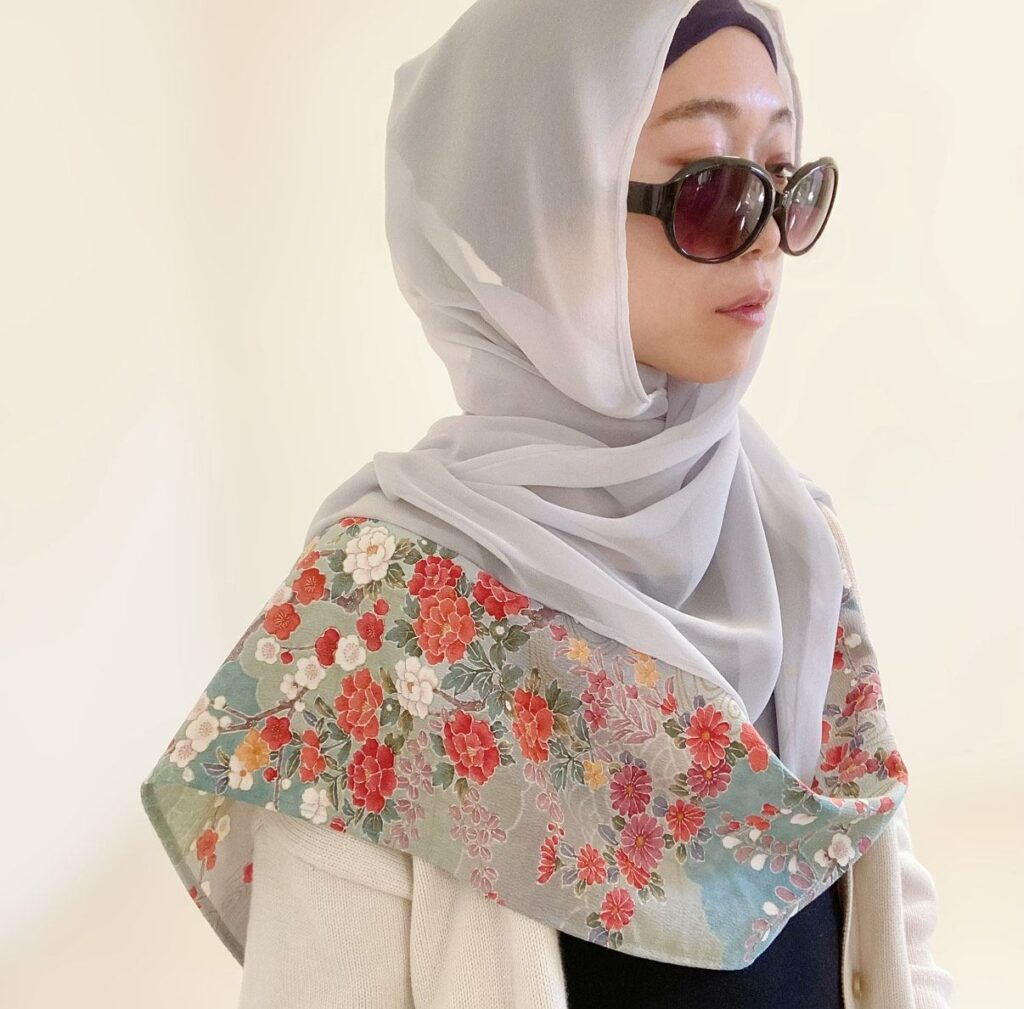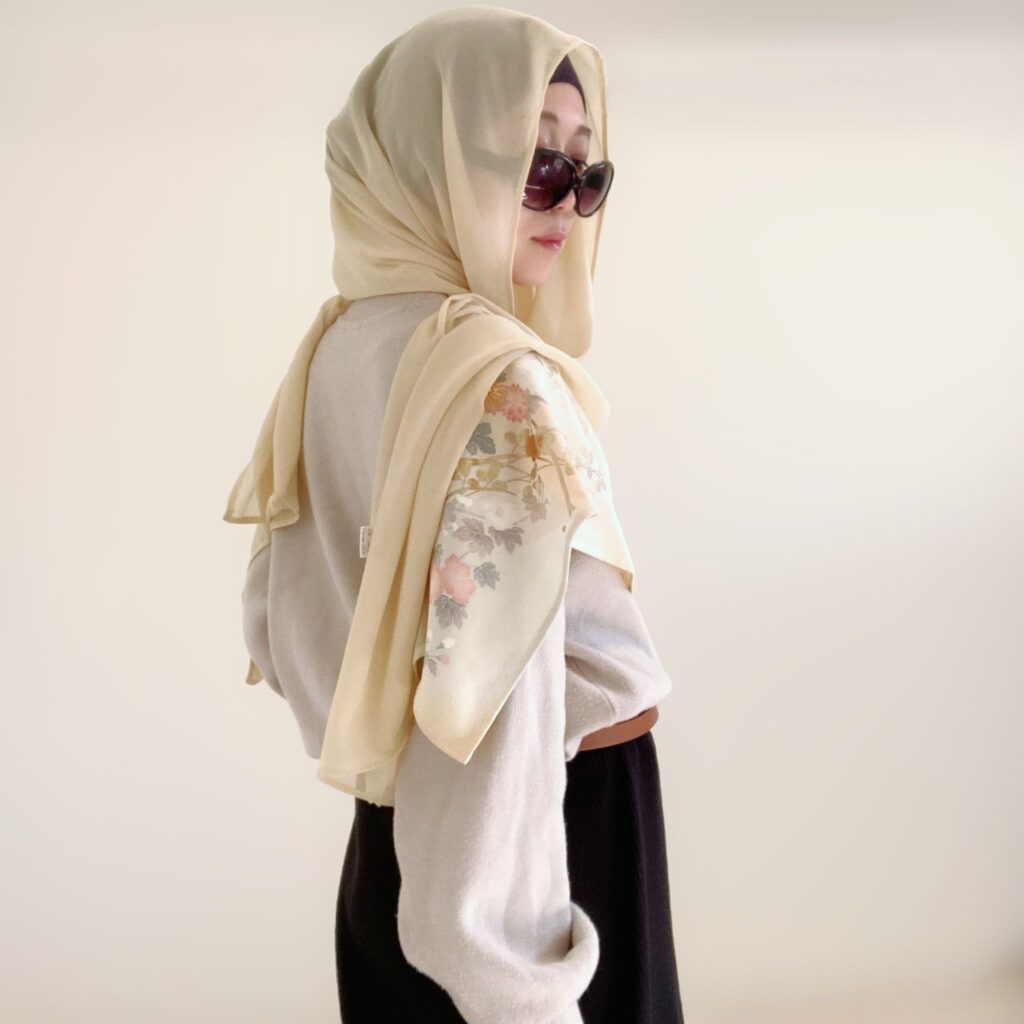



Xiaxia Hijab is a unique Japanese brand that merges the elegance of the traditional kimono with Islamic modest fashion, creating hijabs made from authentic kimono fabric.
Kaori Kobayashi, founder of Xiaxia Hijab, shared exclusively with Arab News Japan the inspiration and obstacles behind the brand’s creation: “On my first trip to Malaysia in 2017, I was struck by the sight of women wearing beautifully colorful hijabs. Until then, the only image I had of Muslim women was the all‑black attire shown in the media. The moment I saw those vibrant hijabs, my impression of Islam changed completely. That experience made me want to fuse the beauty of the kimono I love with the elegance of Islamic dress and share this new aesthetic with the world, so I began creating kimono hijabs.”
She added: “The concept of xiaxia hijab is uniting the beauty that symbolizes Japanese culture—the kimono—with the beauty that symbolizes Islamic culture—the hijab—and share the allure of both with a wider audience.”
The journey, however, was not without hardship. “Launching xiaxia hijab was far from easy. At first, I had to learn everything myself, from sewing to running an online shop. I had no prior sewing skills, so I started from scratch, all while raising a child with an intellectual disability. Even so, the customers who resonate with the story behind each hijab and support my work have been a tremendous source of encouragement,” she said.
Addressing cultural sensitivities, Kobayashi explained: “I have always struggled with the concern of whether my creating hijabs as a non-Muslim might be perceived as disrespectful by Muslims. However, when I shared my concerns, I received incredibly warm and encouraging words from many Muslims, which gave me great confidence and I sincerely appreciate all the support from everyone.”
Kobayashi said her creations have been well received both in Japan and abroad, praised for reflecting the beauty of Japanese and Islamic traditions.
When asked what sets Xiaxia Hijab apart, she said: “Every xiaxia hijab piece is made from genuine kimono fabric paired with soft, Japanese‑made chiffon. From selecting and unpicking each kimono to cleaning and sewing, every step is done meticulously by hand. About five specialized artisans are involved in making a single hijab. Rather than mass production, each piece lets you ‘wear a story,’ and that, I believe, is our greatest point of difference.”
Her approach is guided by a deep respect for craftsmanship and sustainability. “The kimonos we use are antiques more than 50 years old that no one wears anymore. Pure‑silk kimono fabric is extremely durable: we unpick, wash, and remake it into entirely new forms. With great respect for each piece of cloth, we breathe new life into it as a hijab,” Kobayashi said, referring to the traditional Japanese concept of mottainai, or not wasting what still holds value.
Though she has not yet visited the Middle East, Kobayashi noted the warmth of her Middle Eastern customers online. “They are always kind and encouraging. I look forward to the day I can visit their countries and meet them in person,” she said.
Looking ahead, she shared her plans for the brand’s future: “We are preparing many new items, including ‘kimono abayas’ that blend traditional Japanese design with modest fashion, and gentle inner hijabs made from Japanese fabrics. Each project aims to offer unique modest fashion that combines Japanese beauty with practicality.”
“I hope our work can serve as a small bridge between Japanese and Islamic cultures and bring joy to many people,” she added.